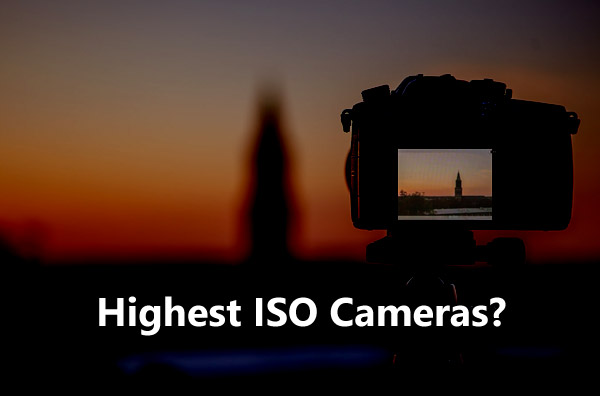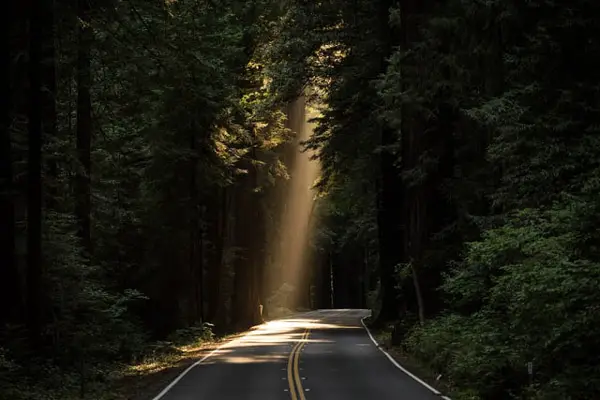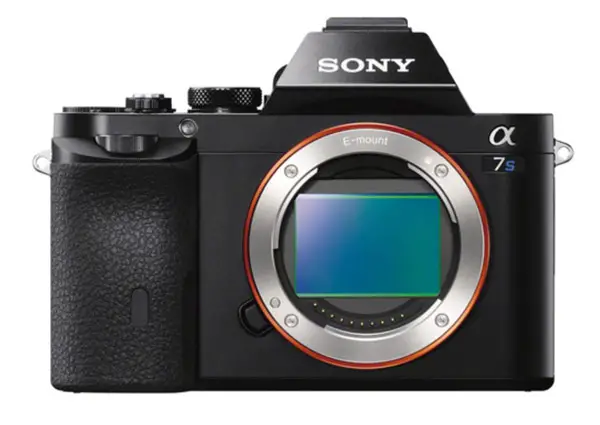Digital cameras with higher and higher ISO ranges are appearing on the market these days. Some have ISO numbers that seem out of this world. These are best suited for specific conditions and types of photography. Should you go for the absolute highest ISO camera or are there other aspects to consider?

In this article I will share my experiences with high ISO cameras, explain the different types of ISO and how it all relates, and suggest the best high ISO cameras for various budgets.
Technically, the highest ISO camera is the very pricey Canon ME20F-SH. However, there are many other new cameras including certain DSLRs which have a high ISO range, are much more affordable, and can do everything high ISO settings allow you to do in photography, including shooting in near complete darkness.
We will get into whats currently available in terms of high ISO cameras, what you should look for in one, and how you can save some money. But first, lets go over some facts and misconceptions about high ISO. You can skip this section and go right to the list, unless you are not a high ISO expert.
What is a “high ISO” in photography?
All digital cameras come with an ISO range. ISO, together with Aperture and the Shutter speed, gives the exposure for the image. Some cameras support a high ISO range whereas others support lower ISO ranges. Unfortunately, when you bump up the ISO, it will often result in noise in the image.
A camera that can deliver noise-free pictures at high ISOs can be called a high ISO camera. In photography, you will be using high ISO values in many situations. These situations are given below.
Low Light conditions
If you are doing night photography, you will have to rely on the ISO performance of your camera. This is because the light will be low during the night. So, in order to get a correct exposure, you need to increase the aperture opening, or reduce you shutter speed or bump up the ISO value.
All camera lenses come with a maximum aperture opening. So, you cannot increase the aperture beyond that limit. In the case of shutter speed, if you go for very low shutter speeds, the image may become blurry due to camera shake or movement of the subject in the scene.

The third option is to increase the ISO settings. So, you will have to bump your camera’s ISO value to get the correct exposure for the image. Astrophotography and long exposure night photography are two examples of photography genres that make use of high ISOs.
To Freeze Action
If you are doing sports photography or wildlife photography, you will have to freeze the action to capture images. Such action photography demands higher shutter speeds. In such situations, you will have to increase the ISO to get a higher shutter speed even in decent lighting conditions. It is necessary to get a perfectly exposed image.
For example, when you photograph birds in flight, you will be using shutter speeds of 1/1000 and above. So, these higher shutter speeds demand higher ISOs to get a properly exposed picture of the bird moving at a fast rate.
In the case of birds and wildlife photography, you will be using long telephoto lenses with focal lengths 400mm, 500mm, or 600mm. Such long telephoto lenses demand higher shutter speed for a shake-free image. According to the thumb rule of shutter speeds, you must choose a minimum shutter speed that is reciprocal of the focal length of the lens.
For a 500mm lens, you need to select a minimum shutter speed of 1/500th of a second. So, you will end up using high ISO values to get the right exposure on the subject.
Windy weather conditions
If there is a good amount of wind, then the subjects like trees and clothes in the scene can move and become blurry in the picture. So, you need to choose a higher shutter speed to counter this effect. When you increase the shutter speed, then you will have to choose high ISO values to get a good exposure, otherwise the image will be too dark.
Which ISO has the best image quality?
In general, Base ISO or ISO100 will give you the best image quality as it is the unamplified sensitivity of the camera. Its the setting at which your sensor produces its best signal-to-noise ratio. Increasing ISO number decreases image quality. Some cameras have Extended Low ISOs such as ISO50 for even cleaner images.
Base ISO came from the world of film cameras and film sensitivity, where ISO 100, ISO 200, ISO 400, ISO 800, ISO 1600 were imprinted on rolls of film, and you would have to set your older camera to the correct ISO speed of the film. The difference is film photography has grain whereas digital photography has noise.
Native vs Extended ISO
Most of the digital cameras, especially mirrorless and DSLR cameras, provide the option to select between the native ISO range and the extended ISO range in the camera. If you are completely new to photography, then it can be confusing. So, lets see the differences between these two types of ISO ranges.
The native ISO range of the digital camera is actually the sensor’s ISO range. By default, the camera’s ISO range will be in the native ISO range.
The extended ISO is also known as the expanded ISO. In the case of the extended ISO, you are basically expanding the ISO range of the camera digitally (sort of like optical zoom vs digital zoom through software in most cases). So the extended ISO range allows you to go beyond the native ISO range of the camera.
For example, consider a digital camera that supports both native and extended ISOs. The native ISO range of this camera is 100 to 16000. When you select the extended ISO range, you may be getting a range of ISO 50 to ISO 32000. So, here you have changed the base ISO range from 100 to 50 and the high ISO limit from 16000 to 32000 by choosing the extended ISO range. This range will vary for different cameras.

You will be using the higher extended ISO values only during extreme low-light situations, where you find it difficult to get a good shutter speed value. Using these higher ISO values has some adverse effects on image quality. The amount of noise will increase. The picture will become more grainy.
If your digital camera supports shooting in RAW format, then it is better to capture a picture using the native ISO range.
Will High ISO values damage the camera?
When you use higher ISO settings, you are basically increasing the sensitivity of the camera sensor. The camera manufacturer has determined a range for the ISO values. So, you cannot go above the highest possible ISO settings in the camera. Thus, your camera will be completely safe at the highest possible ISO settings. It will not cause any kind of damage to the camera.
What is the highest ISO without noise?
The photos will be free of noise only up to a certain ISO value. Even though the camera manufacturer specifies an ISO range for the camera, you won’t be able to get noise-free images in all these ISO values. So, the noise level with respect to the ISO settings will be different for different cameras based on what sensors they use and other factors.
Each camera will have an ISO value above which the picture starts to become grainy. For example, the Canon 7D Mark II produces noise-free images up to an ISO value of 800. In the case of Canon 1DX Mark II, you can get noiseless pictures up to ISO 1600.
When you are increasing the ISO setting of your camera, you are increasing the sensitivity of the camera sensor. It will result in the introduction of noise, visible in the form of grain. Different cameras use different sensors. So, the quality of the image will be different for the same ISO value.
For example, let’s say you have two mirrorless cameras, one of the cameras has a full-frame sensor and the other one an APS-C sensor. If you compare the pictures of the subject taken from both these cameras under the same lighting condition, at the same higher ISO value, you can see that the noise will be less for the full-frame camera when compared to the APS-C camera.
It is due to the fact that the image quality and the pixel size of the sensor are related. You will get a larger pixel size in a full-frame camera when compared to the APS-C camera. Therefore, the ISO performance will always be better for a full-frame camera sensor.
In the case of an APS-C camera body, an ISO value of 100 to 800 will usually produce good quality pictures without noise. If it is a full-frame camera, then you can use ISO range of 100 to 1600 to get good quality pictures. If you go beyond this range, then the camera sensor will start to pick up more noise. It will become visible in the form of grain. Then you will have to use any noise removal software to fix the grain in the image and there is only so far that post production work can go.
High ISO or Under Exposing the Image- Which is Better?
When you are doing photography that demands high ISO values, you have two options. You can either capture the image at high ISO values to get a correctly exposed photo or use a slightly lower ISO value and get an under-exposed image. When you underexpose the image, you need to get this image to any photo editing software to change the exposure in post-production.

Underexposed photo
If you compare this processed image with the correctly exposed version of the image with high ISO, you can observe that the noise is more in the case of the processed image unless your camera is ISO invariant. If your camera is ISO invariant, then you can get better results by underexposing the image while capturing and increasing the exposure of the picture later in post-processing to get the correct exposure.
High ISO Vs Dynamic Range
The dynamic range of the picture you can capture with your camera is dependent on the ISO setting. When you choose high ISO values for photography, it reduces the dynamic range of the capture. You will get less color and tonal range with high ISO settings. So, even if the situation demands very high ISO values, try to keep them as low as possible.
Remember that your camera’s base ISO is ISO setting at which your camera’s processing pipeline produces its best signal-to-noise ratio and where the sensor can achieve its full dynamic range.
JPEG or RAW For High ISO Images
All DSLR and mirrorless cameras come with the option to record the pictures in RAW and JPEG format. As you may know, the RAW format captures more details in the scene than a JPEG one. JPEG is a lossy compressed image format.
So, when you are doing high ISO photography, try to capture the picture in RAW format. It will help you to retain more details in the image after the post-processing and noise removal. You can set the image format to RAW alone or “RAW+JPEG” if you are capturing images at high ISO values.
You can use popular noise removal software like the Topaz DeNoise AI, Noise Ninja, Neat Image Pro, or Noiseware to eliminate the noise.
Why buy a high ISO camera?
Alight, now that we are ISO pros, lets get into cameras.
When the camera comes with a high ISO range, it indicates that you can use it to capture photos in very low-light conditions. The camera that supports a large ISO range delivers noise-free pictures at higher ISO levels. My first high ISO camera was the Sony Alpha 7S. Newer versions with better specs have replaced it.
This camera changed my photography technique. I was able to go tripod-less in low light, capture action shots I could not before with the required higher shutter speed while maintaining proper exposure, and with its large live screen see a low light world my eyes could not. It was very exciting and got my creative juices flowing. I would highly recommend a high ISO camera.

If you are doing night photography or if you constantly shoot in low-light situations, then investing in a high ISO camera will really help you to capture pictures with less noise. All popular camera brands have got a good line-up of high ISO cameras. However, some brands seem to be better at the high ISO game.
Below is the list of available high ISO cameras:
1. Canon 1DX Mark III Full-frame DSLR camera
The Canon 1DX Mark III comes with a native ISO range of 100 to 102400 and an extended ISO range of 50 to 819200 and captures images without any noticeable noise at ISO 3200. This full-frame flagship Canon camera is loaded with other features as well. For more info click here.
2. Sony Alpha 1 Full-frame Mirrorless camera
The Alpha 1 is the top model in the full-frame mirrorless camera segment from Sony, and it supports a native ISO range of 100 to 32000 and 102,400 expanded. The amount of noise at high ISO values is very low. For more info click here.
3. Sony Alpha 9 II Full-frame Mirrorless camera
Sony A9 II is the preferred camera body for many wildlife and sports photographers, mainly due to its better noise performance at high ISOs. This camera body is capable of producing images with less noise at ISO 6400 and above and has a top ISO of 204,800. For more info click here.
4. Sony FX3 Full-frame Mirrorless camera
The Sony FX3 is a pro-movie camera that also supports still photography and comes with an ISO range of 80 to 102400. You can expand the ISO up to 409600. It is a 12.1 Megapixel camera with a sensor size of 35.6 x23.8 mm. The pixel size is large for this camera sensor. For more info click here.
5. Sony Alpha 7S III Full-frame Mirrorless camera
The Sony A7S III is a high ISO camera at a good price point . It supports a maximum native ISO of up to 102400 and can expand it to 409600. For more info click here.
6. Canon EOS R5 Full-frame Mirrorless camera
If you are interested in a high ISO mirrorless camera from Canon, then the Canon EOS R5 would be a good choice. You can bump up the ISO up to 51200 in the native range and 102400 in expanded mode. For more info click here.
7. Canon EOS R Full-frame Mirrorless camera
If you are looking for a budget camera with good noise performance from Canon, then the Canon EOS R is for you. It comes with an ISO range of 100 to 40,000 (expandable to 50-102,400). You can easily remove the noise at values of ISO 3200 and ISO 6400 using noise removal software. For more info click here.
8. Nikon Z5 Full-frame Mirrorless camera
The Nikon Z5 is another affordable mirrorless camera body with good noise performance from Nikon. You can capture noise-free images at ISO 1600. The native ISO can go up to 51200 (extended 50 – 102,400). For more info click here.
9. Nikon Z6 II Full-frame Mirrorless camera
The Nikon Z6 II camera supports an ISO range of 100 to 51200. You can increase the high ISO range up to 204800 in the extended ISO mode. The noise at high ISO values up to 6400 can be easily removed through post-processing software. For more info click here.
10. Canon ME20F-SH camera
The Canon ME20F-SH camera supports an ISO value of up to 4 million. It is one of the best cameras in the market that produces high-quality images even at extreme ISO values. It is capable of shooting videos as well as images. But, it is quite expensive. Its photosites measure 19 micrometers, 7.5x larger than the photosites of a Canon 35mm DSLR sensor.
11. Panasonic Lumix S5
The Lumix S5 from Panasonic comes with a dual native ISO feature. The native ISO can be increased as high as 51200. The extended ISO can go up to 204800. The image quality is really good at high ISO values. For more information click here.
12. Olympus OM-D E-M10 Mark IV Full-frame Mirrorless camera
This full-frame mirrorless camera from Olympus is a budget-friendly camera with good performance at high ISO values. It supports an ISO up to 25600. The amount of noise is less at ISO values of 3200 and 6400. For more information click here.
13. Nikon D6 Full-frame DSLR camera
The Nikon D6 is another flagship full-frame DSLR camera body from Nikon that supports ISO up to 102400. You can also extend it to an incredible 3,280,000. It does a good job of capturing less noise at an ISO of 12800. For more info click here.
14. Nikon D850 Full-frame DSLR camera
The Nikon D850 is an average price DSLR camera from Nikon with good noise performance at high ISOs. It comes with a native ISO range of 64 to 25,600. You can increase it further to 102,400. For more info click here.
15.Nikon D5 Full-frame DSLR camera
Nikon D5 comes with a high ISO range of 100 to 102400 (extendable to 3,280,000). You can capture images with less noise at ISO 12800. For more info click here.
I hope this guide has answered many of your questions related to high ISO, noise and image quality and you now know what to look for when buying a camera for low light photography.
Read this definitive guide on ISO to learn ISO basics.








